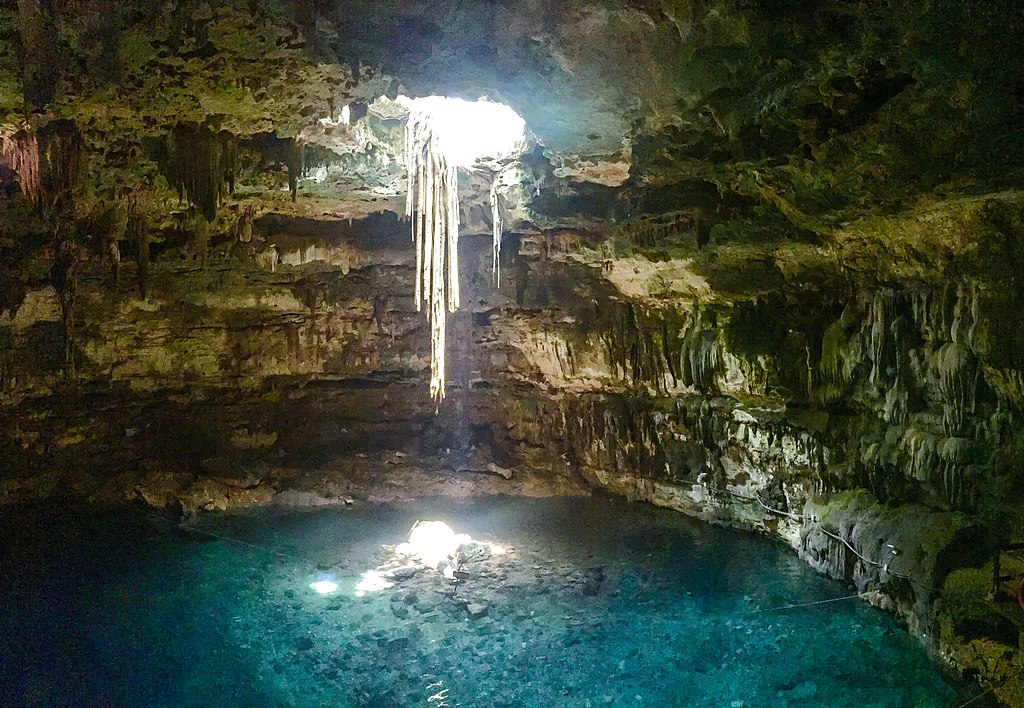Cenote vs. Grotto: Understanding the Difference

When planning a trip to the Yucatán Peninsula, you might come across the terms “cenote” and “grotto.” While both are natural formations, they have distinct characteristics. Let’s delve into the differences between these two captivating geological wonders. Here are some tips on Cenote vs. Grotto: Understanding the Difference.
What is a Cenote?
Cenotes are natural sinkholes or pits resulting from the collapse of limestone bedrock. They come from over thousands of years. As rainwater gradually dissolves the limestone, they created underground caverns. When the roof of a cavern collapses, it exposes the underground water to the surface. Thus forming a cenote.
- Key Features of Cenotes:
- The collapse of limestone bedrock forms it
- Freshwater
- Lush vegetation often surrounds it
- Can range from small, deep pools to expansive underwater cave systems
Cenote vs. Grotto: Understanding the Difference. What is a Grotto?
A grotto is a natural cave or hollow. The erosive action of water or wind often forms it. You can find them in various geological settings, including limestone, sandstone, and volcanic rock. They can vary in size, from small, cozy caves to large, cavernous chambers.
- Key Features of Grottos:
- Formed by erosion or volcanic activity
- Can be dry or contain water
- Often adorned with stalactites, stalagmites, and other cave formations
- Can be found in various geological settings
The Yucatán Peninsula: A Cenote Paradise
The Yucatán Peninsula is renowned for its abundance of cenotes, many of which are open to visitors for swimming, snorkeling, and diving. These cenotes offer a unique opportunity to explore the stunning underwater world and experience the tranquility of these natural wonders.
Cenote vs. Grotto: Understanding the Difference
While both cenotes and grottos are natural formations, the key differences lie in their formation and primary characteristics:
- Formation: Cenotes are formed by the collapse of limestone bedrock, while grottos are formed by erosion or volcanic activity.
- Water: Cenotes are primarily filled with freshwater, whereas grottos can be dry or contain water.
- Location: Cenotes are predominantly found in limestone regions, while grottos can be found in various geological settings.
By understanding the differences between cenotes and grottos, you can better appreciate the unique beauty and geological significance of these natural formations.
